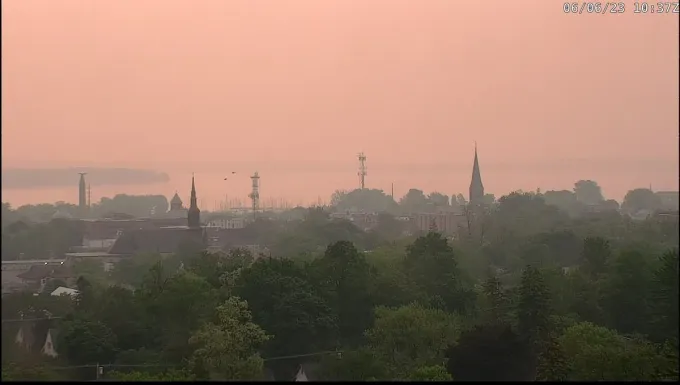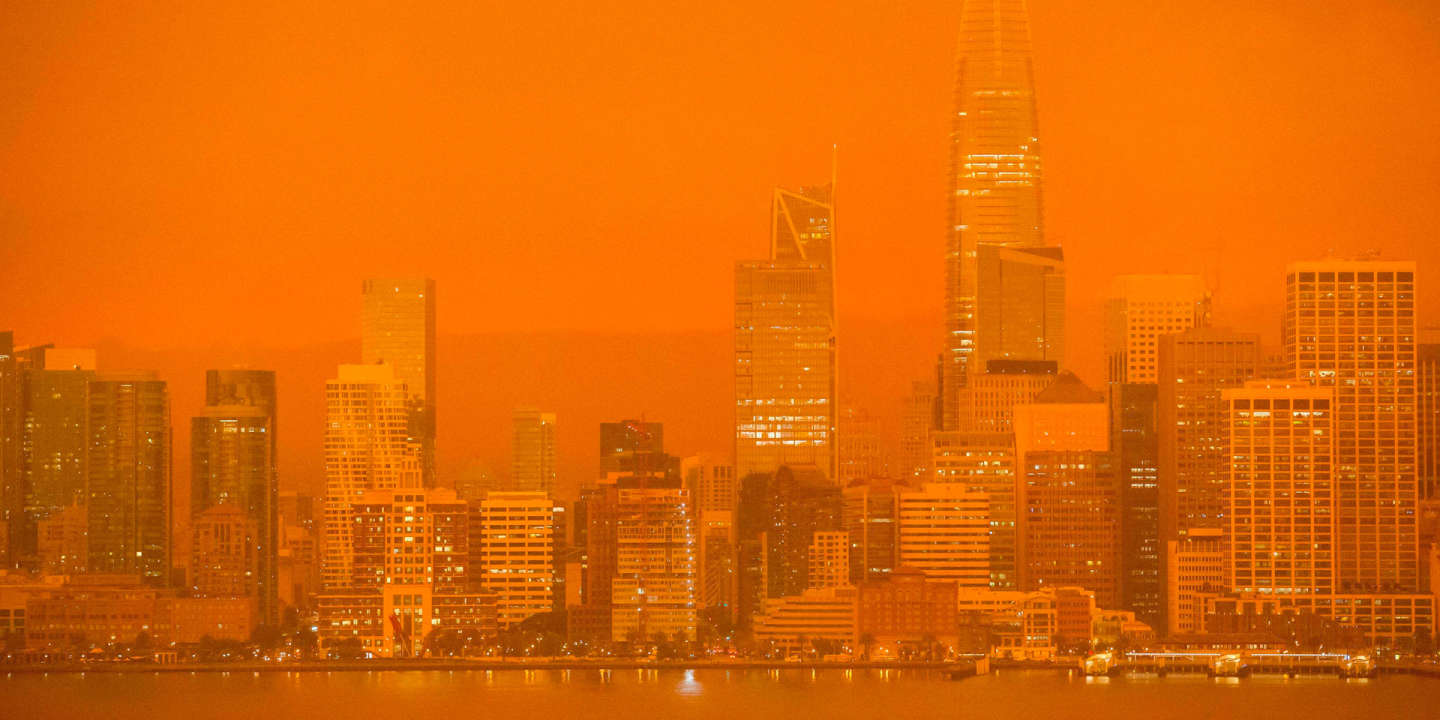Today is our chance to understand what it really feels like every day on a fossil-fueled planet, for the billions of people unlucky enough to really bear the brunt. My eyes are stinging a bit from the smoke, but I’ve never seen more clearly.
Bill McKibben is the Schumann Distinguished Scholar at Middlebury College and co-founder of 350.org and ThirdAct.org. His most recent book is “Falter: Has the Human Game Begun to Play Itself Out?.”
Cross-posted from Common Dreams
I live in Vermont, where the scent of woodsmoke on a late fall afternoon is an iconic smell. It was not like that here Wednesday—it was more like sitting on the side of the campfire where the wind is blowing, but without any of the benefits of the blaze. The air was a dull gray, and the sunshine through it looked and felt diminished, as if from a different star circling a different planet. My chest was tight, and I kept bringing up phlegm.
And I’m lucky. The air was worse in New York and in D.C.—indeed, across the east cities are breaking all-time pollution records. (I imagine it was smokier back in the early Industrial Revolution, but we weren’t measuring it).
And we’re all lucky. Because this is what a huge percentage of the world’s people breathe every single day of their lives. In fact, we should probably—in our hearts if not our lungs—be grateful for a few days like this. They bring us much much closer to the lived experience of billions of our brothers and sisters.
In the case of the eastern U.S. this week, the smoke—and the dangerous particulates it carries—comes from Canadian wildfires. They are a result of the hot dry weather that climate change has made more likely. It began out west earlier in the spring, as parts of Alberta turned into an inferno. And then, as the go-to meteorologists Bob Henson and Jeff Masters reported today,
By late May and early June, the dangerous fire weather extended into the moister climates of Ontario and Quebec — and even the Canadian Maritimes — as lush trees and grasses became tinder-dry amid severe drought and heat.
It’s not just Canada, of course. A new analysis released last week by Climate Central analyzed the fifty-year shift towards more severe fire seasons
“Southern California, Texas, and New Mexico have experienced some of the greatest increases in fire weather days each year, with some areas now seeing around two more months of fire weather compared to a half-century ago,” the report noted. It added: “Even small increases in fire weather in the East, which has nearly 28 million homes located in zones prone to burn, puts more people at risk.”
But here’s the thing. There’s nothing particularly special about wildfire smoke. Vermont on Wednesday felt like a hundred days I’ve spent in New Delhi, in Shanghai, in Beijing, in Ahmedabad. Many of those were much worse: I’ve stood on Connaught Place and not been able to see the giant Indian flag flapping in Delhi’s Central Park, even though I knew if was a few hundred feet away at most.
That smoke doesn’t come from forest fires. It comes mostly from burning fossil fuels. But it’s all combustion, and it all does the same thing to your lungs. There are four and a half million children in New Delhi, and the estimate is that half of them have irreversible lung damage from breathing the air. Around the world, nine million deaths a year—one death in five—comes from breathing the combustion byproducts of fossil fuel. About a third of all deaths in Asia come from breathing fossil fuel pollution.
If the climate crisis is the great existential crisis on our earth, then smoke is the great daily crisis. Happily, they’re both caused by the same thing: burning coal and gas and oil. And even more happily, we know how to end it. We just stop burning stuff, and rely instead on the fact that there’s a large ball of burning gas at a safe 93-million-mile distance. We get all the fire we could ever want, and none of the smoke. Call it “external combustion.”
This is entirely doable—solar power is the cheapest way to make energy on earth. If someone tells you they don’t want to look at a solar panel, or that mining required for a wind turbine does environmental damage, it’s fine to see their point. But everything is relative. This is our chance to understand what it really feels like every day on a fossil-fueled planet, for the billions of people unlucky enough to really bear the brunt. My eyes stung a bit from the smoke, but I’ve never seen more clearly. Everything is in perspective, even—especially—through the haze.
Here’s what it looked like in Burlington Vermont on Wednesday afternoon.

Eventually the wind will shift and it will clear. But it will look like this most days in most Asian cities this year and every year, until we beat the fossil fuel lobby.



Be the first to comment